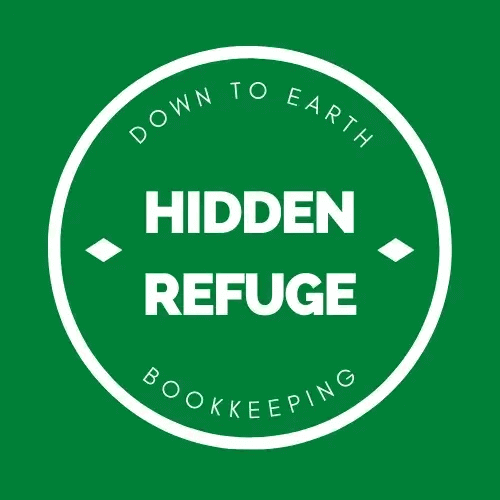Setting Up An Effective Business Expense Tracking System
A solid expense tracking system helps keep a business focused, […]
A solid expense tracking system helps keep a business focused, organized, and running smoothly. When every dollar has a label and every cost has a spot, it gets easier to make smart decisions. Whether you’re buying office supplies, spending on advertising, or using petty cash for last-minute runs, knowing what’s going out (and why) can save you a lot of stress later.
An effective tracking setup doesn’t need to be fancy or complicated. What it should do is bring order to spending, give a clear picture of where your money is going, and help you stay ahead of any issues. It’s about building habits that support stability so you’re not caught off guard when tax season hits or when it’s time to check your budget and see what’s working.
Choosing The Right Tools
Before anything else, picking how you’re going to track expenses is a key step. Some people think scribbling notes in a ledger is enough. Others rely on spreadsheets, while many prefer digital bookkeeping tools. The main thing is that your method fits the way you do business. If you’re trying to keep things simple but still need accurate records, there are plenty of options worth exploring.
Here are a few common tools business owners tend to use:
– Handwritten ledgers or notebooks: Good for very small businesses with minimal transactions, but easy to lose or mess up
– Spreadsheets (like Excel or Google Sheets): Flexible and free, but easy to make formula errors or forget to update on time
– Expense tracking apps and software: These help with automation and organization. Some come with built-in features like receipt scanning and syncing with bank accounts
Manual tools mean you have full control, but they also come with more room for error and take extra time. On the flip side, digital tools can reduce mistakes, alert you to unusual spending patterns, and save time, but some of them may cost money or require a learning curve.
When choosing the right system, think about how many transactions you handle each month and how you prefer to organize your day. If you make daily purchases or have multiple people using company funds, investing in software might be the better call. On the other hand, if you’re just starting out and most of your expenses are written checks or tracked on a single card, a spreadsheet might be fine for now.
The trick is being honest about your habits. One business owner noticed she kept forgetting to write down lunch meetings paid with petty cash, so she switched to an app that tracked those small purchases on the spot. It saved her time and cleaned up her records almost right away.
Categorizing Your Expenses
Once you’ve got your tool in place, the next step is keeping your expenses organized by category. This part can feel tedious if you don’t set it up from the start, but it saves a lot of time when you’re looking back through a month’s worth of spending.
Common categories might include:
– Office supplies
– Travel and transportation
– Marketing and advertising
– Meals and entertainment
– Equipment and tools
– Petty cash expenses
– Utilities and rent
Stick to simple, broad categories at first, and leave room to get more detailed as your needs grow. Let’s say you lump all food-related costs under “Meals” right now. Later, you might break that down into “Client Meals,” “Employee Snacks,” and “Team Lunches” to track where your money really goes.
It also helps to create a set of rules for how you name and sort stuff. If you label one gas receipt as “fuel” and another as “car,” you’ll get mixed reports that can’t really show your full spending on transportation. Keeping the wording uniform like always using “transportation” makes it easier to compare and understand your expenses.
This part of your system will need a little cleanup every now and then. Catching mistakes and adjusting categories is part of the process. But once your list is set, your records get clearer, smarter, and a lot more useful.
Implementing A Clear Process
Once categories are set, it’s time to build a simple process that keeps everything moving in the right direction. This part isn’t just about maintaining order. It’s about making sure nothing slips through the cracks, especially when multiple people deal with business spending.
Start by deciding when and how expenses get recorded. Will entries be made daily, weekly, or at the end of each month? Daily might seem like a lot, but it stops receipts from piling up and getting lost. Whatever schedule you choose, make sure it’s doable and consistent.
Creating expense reports is the next piece of the puzzle. These can be handwritten, digital, or generated by a bookkeeping app, depending on what you picked earlier. Each report should include:
– Date of the expense
– Vendor or place of purchase
– Amount spent
– Purpose of the purchase
– Category it falls under
– Payment method used (card, cash, reimbursement)
Expense reports help you quickly review what’s been spent and why. They also come in handy when looking for patterns or deciding where to cut costs.
If you have a team, set expectations around submitting expenses. Clear guidelines make it easier for everyone. Outline how receipts should be turned in, what counts as a business expense, and how long they have to report spending. This also protects your business from confusion down the road.
An example: A small team of three used to email loose receipts to their manager. Things constantly got mixed up or lost. Switching to a shared digital folder with labeled files helped sort and find documents in seconds. It didn’t require fancy software, just a little structure.
Regular Review And Audit
Tracking expenses isn’t a one-and-done job. The system you build needs check-ins to stay useful. Set a regular time to review your expenses. Monthly is usually a good rhythm.
Looking over your numbers gives insight. You can spot changes in spending, catch mistakes, and think through anything that looks odd. Maybe your marketing spend doubled without boosting leads. Or maybe you’re spending money in ways that don’t match your business goals. Catching those things early helps adjust before money gets wasted.
Aside from routine reviews, doing small internal audits helps catch bigger issues. Audit doesn’t have to mean something scary or formal. It can be as simple as pulling a few weeks’ worth of expenses and checking them against your bank records and receipts.
Here are some things to include during your audit:
– Compare reports to actual charges
– Make sure categories are being used correctly
– Confirm receipts match reported amounts
– Note any missing entries or suspicious activity
These reviews help keep the system working as intended. They also help you fine-tune the process. Maybe you notice team members keep choosing the wrong category. A quick fix could be a cheat sheet or a short training session. Or maybe certain expenses need their own category. It’s okay to update as you go. As long as the main structure stays solid, making small changes will only improve how it works.
Keeping Your Business Financially Healthy
An expense tracking system is more than just a record keeper. It’s a tool that brings clarity to spending habits and lets you stay in control when it matters most.
By choosing the right tools, categorizing wisely, setting up a process, and reviewing regularly, you’re giving your business a strong structure. That structure helps when you need to make decisions, track budgets, or prep for tax time. And it sets up your business to grow more responsibly with fewer surprises.
The best part is how manageable it becomes once it’s up and running. You won’t need to second-guess every purchase or wonder where money went. With everything in place, checking on your financial health turns into a normal routine, not a crisis. That kind of peace of mind makes a big difference for any business owner.
Looking for a smoother way to handle petty cash management in your business? Discover how our services can help simplify your bookkeeping process. At Hidden Refuge Bookkeeping, we’re here to support your efforts in staying organized and making smarter financial decisions with less stress.





